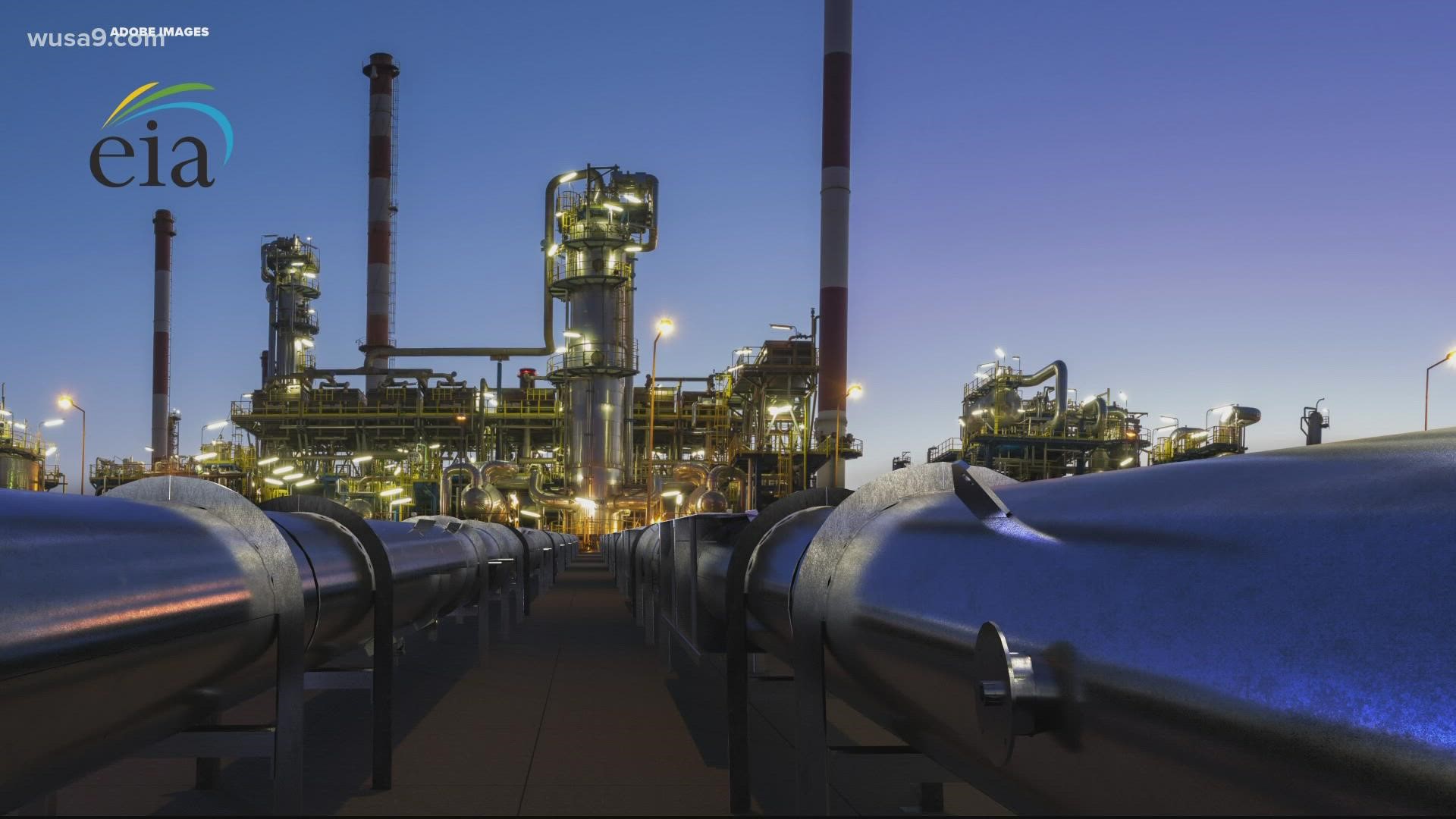WASHINGTON — Gas prices are skyrocketing nationwide.
The average price for a gallon of gasoline in the U.S. hit a record $4.17 Tuesday as the country prepares to ban Russian oil imports.
The average price rose by 10 cents per gallon in one day, and it’s up 55 cents since last week, according to AAA data.
With gas prices surging across the country, how can you make your full tank last? AAA offers a few tips to help improve fuel economy.
- Keep tires properly inflated. Underinflation reduces fuel economy, but more importantly, tires low on air degrade handling and braking, wear more rapidly and can overheat and blowout.
- Slow down and drive the speed limit. On the highway, aerodynamic drag causes fuel economy to drop off significantly as speeds increase above 50 mph.
- Avoid sudden starts hard acceleration. These actions greatly increase fuel consumption.
- Avoid extended idling to warm up the engine, even in winter. It’s unnecessary and wastes fuel. Avoid prolonged idling in general. If your car will be stopped for more than 60 seconds, shut off the engine to save fuel. Many newer cars have automatic engine stop-start systems that do this.
- When driving in town, adjust your speed to “time” the traffic lights. This reduces repeated braking and acceleration that consume additional fuel.
- When approaching a red light or stop sign, take your foot off the gas early and allow your car to coast down to a slower speed until it is time to brake.
- Remove unnecessary and bulky items from your car. It takes more fuel to accelerate a heavier car, and the reduction in fuel economy is greater for small cars than larger models.
- Minimize your use of roof racks and remove special carriers when not in use. On the highway even an empty bike, canoe or ski rack can reduce fuel economy, and a loaded rack or car-top container will have a major effect on gas mileage.
To track gas prices across the DMV region click here.

